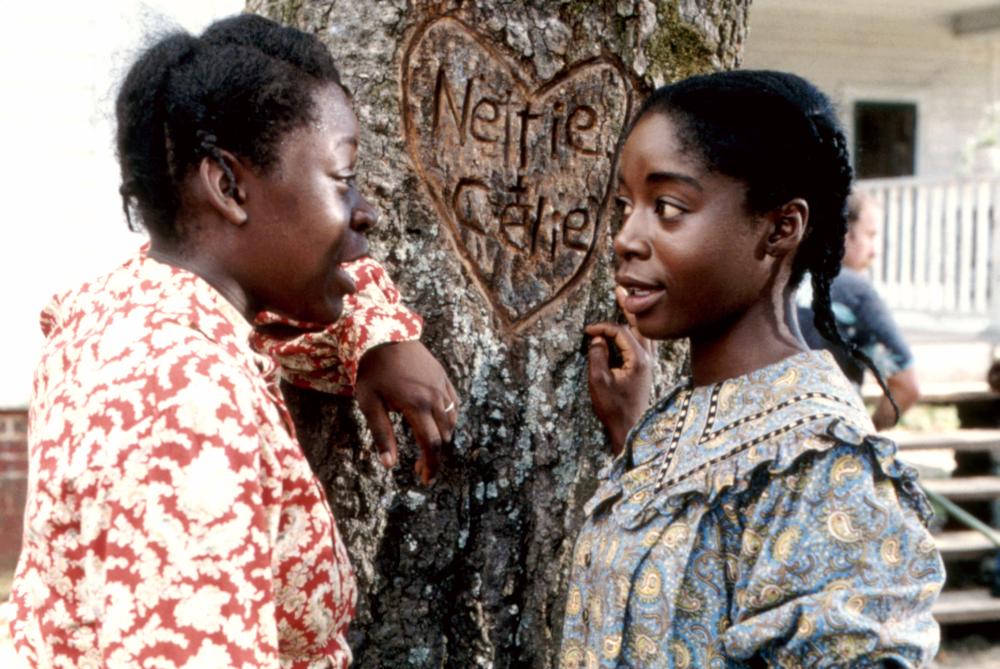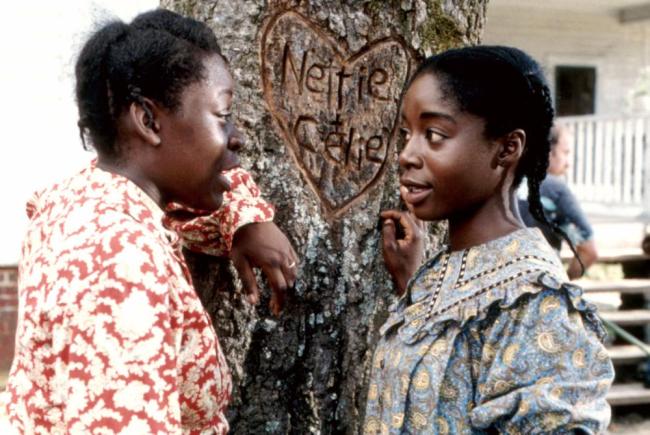The Color Purple and What it Means for Black Women


It comes as no surprise to Black women that a novel by a Pulitzer Prize winner about a silenced Black girl that made millions at the box office by one of the most famous directors of all time could so easily be forgotten. The more things change the more they stay the same.
It is not surprising that it was two white women, Elizabeth Banks and Anne Thompson—who flourish within the cinematic community—felt they could brush off one of the most successful Black led films of all time as “a flop.” 2017 is no different than the hundreds of years that came before it.
There was no shock when Vivian Kane said she hadn’t seen the trending conversation amongst Black women on Twitter as to the importance of The Color Purple.
All parties have apologized for their mistake. Time will tell if they can take the steps to actively correct these mistakes. White women have been centered in this conversation for too long already. The time is now to focus on the why and the best way to respond.
As of late, there has been a great deal of discussion pertaining to women in film. What roles do they play? How many have been hired as opposed to their male counterparts? Which of them has the talent and diplomacy to rise to the top of the boys club? Whose stories should their films center on? And yet, as is common with feminist ideals and goals, women of color have been left on the sidelines.
Black women in American pop culture are easy to erase. Banks did it not just in forgetting The Color Purple exists but also in brushing off Shari Belafonte when she corrected Banks.
This is in keeping with the time. Many have claimed that Wonder Woman is the feminist film of a generation ignoring the complete lack of representation for women of color. Yes, the Black women are given a few lines of dialogue. They are part of a political discussion. They hold leadership roles within the Army. Black women take care of Diana. But their ideas are shouted down and they do not serve any great purpose in the film’s larger story. In short, Black women are window dressing. And where are the Asian, Indigenous, and Middle Eastern Amazonians? This is not what diversity feels like.
There is a steady and constant beating. It is a demand not for diversity, but for authenticity. Scholars are begging audiences to learn the difference between visibility and representation. As important as viability is, to see oneself reflected back, representation is infinitely more important.
Representation is more than a reflection; it is a battle cry. It gives viewers the opportunity to go through a journey reflecting their own experiences that comes to a satisfying conclusion. It is the opportunity to live a different life for a few hours, to try, fail, and succeed without leaving your seat. As beloved as Gal Gadot’s Wonder Woman is, many will never be able to picture being her.
This is why The Color Purple is such an important film to Black women. As a book, Alice Walker gave Black women a historical fiction centered on a Black woman’s journey, a journey where the main character wasn’t a slave or a maid, but rather someone who had been bullied into silence. It explored taboo cultural subjects like living outside of the church and craving the community like Shug, surviving sexual assault from a family member, and the importance of Black female relationships started contemporary dialogues.
Spielberg may not have been everyone’s first choice to direct this touchstone, but he was able to give it the kind of Hollywood treatment that made sure the film couldn’t be ignored. It is specifically Spielberg’s whimsy that makes The Color Purple so special. There’s a reason #BlackBoyJoy and #BlackGirlMagic is consistently trending. These images are rare and needed. Yes, even now amongst the Chance the Rapper and Yara Shahidi’s of the world.
Spielberg took Walker’s words and combined them with his ability to capture the essence of childhood on film. Even though Celie is living a nightmare, and even though she has to be stronger than anyone should ever have to be, she faces the world with a wellspring of hope, a hope so powerful it is literally infectious. Everyone leaves Celie to go out into the world and be a better person. It’s not always of their own volition, but her presence has made a staggering change in everyone’s life.
Most importantly, she does this not as the loud best friend. That’s a role we’ve seen too many talented actresses forced into, but she is shown as an introvert at the center of her own story. For decades, women have been vocal about the dismissal of their emotions. Every woman has been asked if it’s her time of the month. Black women have been telling the world that their tears are often seen as ugly and make people uncomfortable.
Seeing Celie’s father shrug off her labor pains with a chilly, “Are you done, yet?” gives validation to those feelings. Seeing it means others have experienced it, too. This extends to so many aspects of Celie’s womanhood. She doesn’t fit the mold of a beautiful woman and often views herself as the help until she escapes and becomes a fine lady.
When Nettie tries to get Celie to fight back she simply says, “I don’t know how to fight. All I know how to do is stay alive.” At the rate Black women are murdered in the United States, this quote resonates throughout the ages. As babies, Celie and Nettie literally race to learn to read so they can keep talking before Mister tries to rape Nettie.
White fragility, a thing that is still misunderstood, is perfectly displayed in Ms. Millie.
Ms. Sofia suffers humiliating indignity as her children are poked and prodded at before being offered a janitorial position by Ms. Millie. At a simple “hell no,” Sofia is physically assaulted first by the mayor, and then by an officer. Pointed fingers and jeers jab at her as the wind blows her skirt up. Violence against Black bodies is challenging to film in a way that is respectful and truthful. Films like Logan and The Bad Batch are still failing to get right.
After a horrifying prison experience, Sofia is forced to work for Ms. Millie. Millie, in a self-serving kindness, promised to let Sofia spend the whole day with her family. Sofia can’t even get her coat off before she has to rush to rescue Millie from a group of men trying to help her.
This theme of Black women helping other Black women is essential because this isn’t the narrative of Black women we see outside of films like Waiting to Exhale and shows like Girlfriends and Queen Sugar. But this theme is essential to the success of the community. It was even Black women who knew to cue the church choir to sing “God is Trying to Tell You Something” to reunite Shug with her father.
Even Sofia plays homage to Celie when she sees her at the juke joint, grabbing her hands and giving her words of encouragement. It’s a perfect visualization of Black women being the only ones to have each other’s back. Celie returns the favor after Sofia is released from prison by helping her with Millie’s shopping.
“I’m poor, I’m black, I may even be ugly, but, dear God, I’m here, I’m here!” Celie shouts as she drives away from Mister. The Color Purple is still here. It is a legacy film for Black women in America. It brings together generations and helps make sense of the world Black women inhabit. It is important and cannot be overlooked.
“I think it pisses off God if you walk by the color purple in a field somewhere and don’t notice it,” Shug says. Today, God must be really pissed.
(image: Warner Bros.)
Joelle Monique is a graduate of Columbia College Chicago with a degree in Cinema Art’s + Science. When she’s not watching tv she can usually be found on Twitter talking about her adventures on Tinder. She is a West Coast Correspondent for Black Girl Nerds and a Host for AfterBuzz TV, Black Hollywood Live, and Book Circle Online.
Want more stories like this? Become a subscriber and support the site!
—The Mary Sue has a strict comment policy that forbids, but is not limited to, personal insults toward anyone, hate speech, and trolling.—
Have a tip we should know? [email protected]